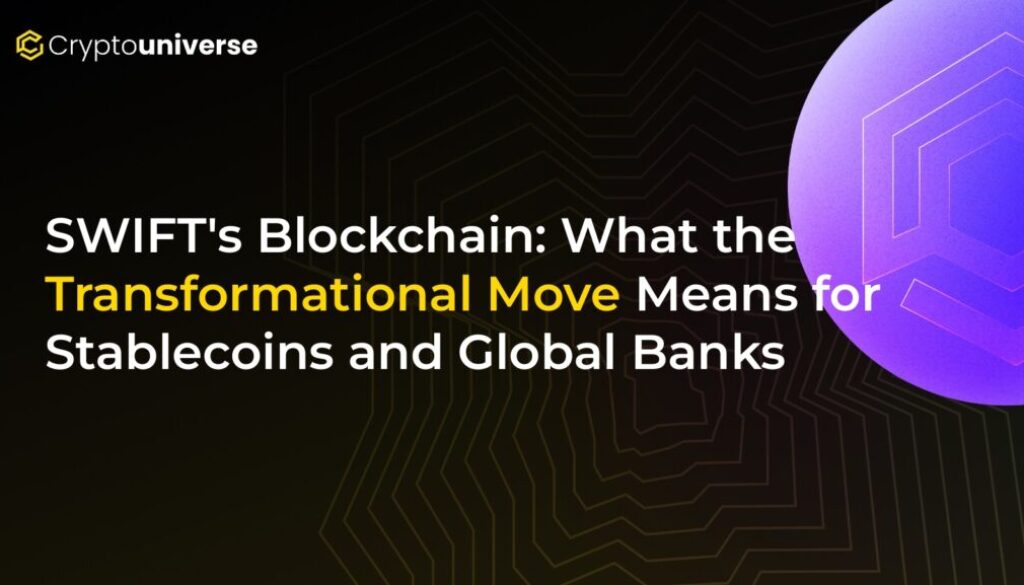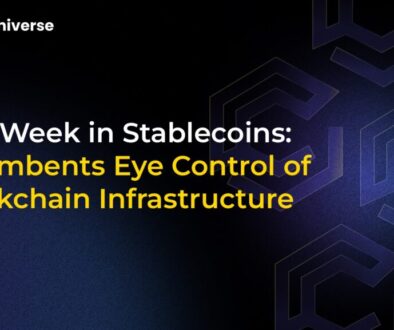SWIFT’s Blockchain: What the Transformational Move Means for Stablecoins and Global Banks

The Titan of Traditional Finance Makes a Web3 Pivot
For over 50 years, SWIFT has been the invisible yet indispensable backbone of global finance. It’s the secure messaging network that allows more than 11,500 banks worldwide to communicate and orchestrate trillions of dollars in cross-border transactions. But SWIFT has always been a messenger, not a mover of money. Now, that’s all about to change.
In a landmark announcement, SWIFT has unveiled plans to build its own shared ledger platform, stepping directly into the world of blockchain technology. This new infrastructure aims to connect disparate blockchains, allowing financial institutions to seamlessly settle transactions involving stablecoins and other tokenized assets. This isn’t just an experiment; it’s a fundamental shift in SWIFT’s business model and a clear signal that the worlds of traditional finance (TradFi) and crypto are converging faster than ever.
From Messaging Layer to Value Layer: A Fundamental Shift
To understand the gravity of this move, it’s crucial to grasp SWIFT’s traditional role. Think of it as a highly secure postal service for banks. It carries the instructions—the message—about a payment, but it doesn’t carry the money itself. The actual settlement happens through a complex network of correspondent banks.
Blockchain technology fundamentally challenges this model. On a blockchain, the message and the value transfer are one and the same. When you send crypto, the transaction instruction and the settlement occur simultaneously on the ledger. This efficiency threatens to make intermediaries like SWIFT obsolete—a phenomenon known as “disintermediation.”
Noelle Acheson, author of the Crypto Is Macro Now newsletter, puts it best: “SWIFT, today, does not transfer value; it sends messages. Onchain, the message and the transfer are the same thing.”
By building its own platform, SWIFT is evolving to survive. It’s moving from being the messaging layer to becoming a central hub for the value transfer itself, aiming to be the bridge that connects various blockchain networks and traditional banking systems.
A Bridge to the Future or a Relic of the Past?
SWIFT’s entry into the blockchain space has sparked a debate: is it the key to institutional adoption, or is it an old giant trying to maintain control in a world that no longer needs it? There are strong arguments on both sides.
The Case for SWIFT: A Necessary Bridge for Banks
The biggest advantage SWIFT has is its unparalleled network. It is already integrated with virtually every major financial institution on the planet. For these banks, adopting blockchain technology can be a daunting and expensive task. SWIFT’s platform could dramatically lower these barriers.
- Reduced Costs & Complexity: David Duong, head of institutional research at Coinbase, noted that SWIFT’s platform could “materially lower” the technical hurdles and integration costs for banks wanting to use stablecoins.
- Standardization: The tokenized asset and stablecoin ecosystem is highly fragmented, with countless different blockchains and standards. SWIFT could bring a degree of standardization, making interoperability a reality rather than a dream.
- Trusted Partner: With over 30 major financial institutions already engaged in the project, SWIFT is leveraging its long-standing reputation to position itself as the go-to provider for banks entering the Web3 economy.
The Case Against: An Unnecessary Gatekeeper?
While its network is a powerful asset, some experts question if SWIFT is truly necessary in a natively digital financial system.
“Is SWIFT necessary in a tokenized financial system? No, it’s not—but it does have connections with virtually all global banks,” Acheson argues.
The core philosophy of blockchain is decentralization, which stands in contrast to SWIFT’s centralized model. Furthermore, SWIFT’s role as an enforcer of geopolitical sanctions has created distrust in some parts of the world. Countries that have had their banks cut off from the network may be hesitant to embrace a new SWIFT-controlled platform, potentially pushing them to develop alternative systems and leading to further fragmentation of the global financial system.
A Watershed Moment Years in the Making
While this announcement may seem sudden, it’s the culmination of years of research and development. SWIFT hasn’t been sitting on the sidelines. Since 2017, the organization has been actively experimenting with distributed ledger technology (DLT), including:
- Pilot projects with the interoperability protocol Chainlink.
- Tests with tokenized securities platforms like Clearstream and SETL.
- Extensive interoperability experiments with various Central Bank Digital Currencies (CBDCs).
This long-term exploration shows that SWIFT’s Blockchain: What the
The Future of Finance is Hybrid
SWIFT’s bold step into blockchain infrastructure is more than just a corporate strategy; it’s a watershed moment for the entire financial industry. It validates the transformative power of stablecoins, tokenized assets, and blockchain technology at the highest level.
The clear takeaway is that the lines between traditional and decentralized finance are irrevocably blurring. The future won’t be a hostile takeover by one side or the other, but a hybrid system where established giants and disruptive technologies find ways to coexist and connect. SWIFT is betting that it can be the most important bridge in that new world.


